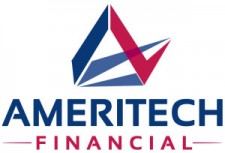Ameritech Financial: Borrowers at Risk for Defaulting After Curing Default Status

El Dorado Hills, CA, May 19, 2017 (Newswire.com) - A recent CFPB report predicts that hundreds of thousands of borrowers who have “cured” the default status of one or more of their federal student loans will default again in the next couple of years. Ameritech Financial, a leading document preparation company that helps borrowers enroll in Department of Education repayment plans, wants to remind new and existing clients of their dedication to helping clients enroll in default rehabilitation programs offered through the DOE. Additionally, they offer other services that help borrowers enroll in income-driven repayment (IDR) plans.
In the past year, nearly 1.2 million borrowers defaulted on one or more of their loans, despite the many repayment options available to them. This is a result of either a lack of communication about their options or trouble enrolling in them. Either way, default has become a serious problem in America with not much hope even after borrowers’ default status has been “cured.”
The huge amount of people who are falling into default at least once — often more — shows that there are deep problems currently within the student loan industry.
Tom Knickerbocker, Executive Vice President
“The huge amount of people who are falling into default at least once — often more — shows that there are deep problems currently within the student loan industry,” says Tom Knickerbocker, Executive Vice President of Ameritech Financial. “It takes missing payments for 270 days to go into default, but once you’re there and finally decide to fix it, it’s even more important to stay dedicated to the process and complete the program. If you don’t complete the program, there are massive consequences. We can help each borrower with that process.”
There are two ways to “cure” default: rehabilitation and consolidation. Some people fear that debt collectors steer defaulted borrowers toward rehabilitation because they are paid $1,710 for each successfully rehabilitated loan and only $150 to help a borrower consolidate. But reports are showing that borrowers who consolidate are much more likely to make continued payments successfully after their default is “cured” and they are even less likely to fall into default a second time.
Default rehabilitation programs require borrowers to make nine on-time payments within 10 months. These payments are based on the borrower’s income and can be as low as $5. After those payments are successfully made, the default status is removed from the borrower’s credit report and the loans are moved to a student loan servicer. The borrower is then expected to begin standard repayment.
Once with a servicer, borrowers have access to IDR plans; however, the CFPB’s report shows that more than 90 percent of borrowers were not in an IDR plan 9 months after completing default rehabilitation. The study also showed that 90 percent of borrowers were five times more likely to default again. Default rehabilitation can only be completed once, so defaulting again can be catastrophic for a borrower’s financial future.
Additionally, the CFPB estimated that about 80 percent of borrowers who failed to make any payments after “curing” default would have been eligible for a $0 monthly payment on an IDR plan.
Consolidation programs do not remove the default status from the borrower’s credit report, but some advocates argue it is still a better option than rehabilitation. Because enrollment into IDR plans can be automatic in a consolidation program, borrowers are set up for success and are less likely to default again. In fact, 95 percent of borrowers who consolidated were in active repayment at the end of the first year.
“Our main concern when we read the CFPB’s report is that the transition to IDR plans after default rehab is overly complicated or not even communicated as the best option to borrowers in this delicate position,” Knickerbocker says. “Our goal is to make sure our clients are informed about the best repayment plans available for their situation and help them to get on track with successful payments.”
About Ameritech Financial
Ameritech Financial is located in El Dorado Hills, California, right next to the California state capitol, Sacramento. Ameritech Financial has already helped thousands of people with financial analysis and student loan document preparation for federal student loan forgiveness programs offered through the Department of Education.
Each representative on the phone is certified through the International Association of Professional Debt Arbitrators (IAPDA) and has received the Certified Student Loan Professional certification through Americans for Student Loan Relief (AFSLR).
Ameritech Financial prides themselves on their exceptional 24/7 Customer Service.
Contact
To learn more about Ameritech Financial, please contact:
Ameritech Financial
1101 Investment Blvd Ste. 290
El Dorado Hills, CA 95762
1-800-792-8621
customer.service@ameritechfinancial.com
Source: Ameritech Financial
